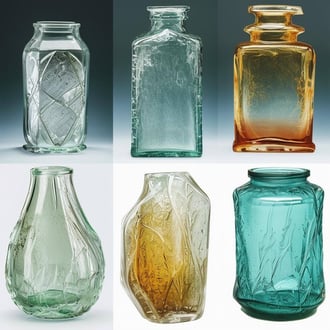Discover how WaveMode technology resolves the tobacco mosaic virus structure under physiological conditions with ...

The ultimate tool for nanoscale research from biological molecules to advanced new materials.
The versatile mid-range research AFM that grows with your demands in modes and accessories.
A compact affordable research AFM that is astoundingly easy to use, with more than 30 modes and options.
Fastest reliable sub-Angstrom surface roughness metrology.
Bringing the power of DriveAFM to a wafer metrology system purpose-built for the requirements of the semiconductor industry.
Measure roughness and other material properties of heavy and large samples up to 300 mm and 45 kg.
For unique requirements, we will design a bespoke AFM solution, leveraging our decades of engineering expertise.
Slide an AFM onto your upright optical microscope turret for a leap in resolution.
One of the smallest ever AFMs, created for integration into custom stages or existing setups.
A flexibly mountable research-grade scan head for integration into custom stages or existing set ups.
What is atomic force microscopy (AFM)? How does AFM work? What AFM modes do I really need? How do I get started with AFM?
Learn how AFM works with cantilever/tip assembly interacting with the sample. Explore CleanDrive technology, calibration methods, and feedback principles for precise nanoscale imaging.
An overview of common AFM modes. To learn about each mode in more detail and see application, view the full article.
We regularly publish detailed reviews providing practical guidance and theoretical background on various AFM applications.
Read detailed technical descriptions about selected AFM techniques and learn how to perform specific measurements on Nanosurf instruments.
A library of links to research papers in which Nanosurf instruments were used.
Learn AFM from our library of recorded webinars, covering different measurement techniques, modes, and areas of application.
Short video clips explaining how to perform different operations on Nanosurf instruments.
Watch a product demonstration to learn about the capabilities of our AFMs.
Short videos of our AFMs.
Browse news articles, press releases and a variety of other articles all around Nanosurf
Browse Héctor Corte-Léon's weekly experiments, for inspiration, entertainment, and to discover everyday applications of AFM.

Héctor here, your AFM expert at Nanosurf calling out for people to share their Friday afternoon experiments. Today I show you the difference between mouse and horse hair.
Can we easily distinguish an hair fiber from a mouse of that one from a horse (a horse tail in this case)?
Distinguishing the origin of hair fibers can have massive importance, for instance, in forensic analysis (See Ref 1), or in quality control (not going to advertise a company in particular, simply look for "fiber identification lab") . However, how difficult it is? This week I got very lucky and found pre-prepared samples for optical microscope that include animal hair fibers. So, I decided to image them and show you how they look. I also happen to have a violin bow around, which is made of horse hair, so... I added it to the list.
The tricky parts of imaging these fibers are fixing them, and water/contaminants (I have no idea how they were handled). Luckily, imaging in static mode solves these two problems, you just need to scan several times until residues are cleaned from the surface by the AFM probe.
As you can see, mouse and hare look very similar, not sure I will be able to distinguish between them, but dog for instance (no idea the breed), seems quite different, with broken edges, less defined. Also, mouse and hare have a texture on top, stripes (which seems to correspond to new cuticle surface, see Ref 2).
Horse and sheep are also somehow similar, although sheep cuticles seem to be larger, more distance between steps. Both of them with quite broken edges. My classification will be that mouse/horse are easy to distinguish, same mouse and dog, or mouse and sheep, but mouse and hare are very similar. Similarly, dog/horse, hare/horse are easy, but sheep/horse are more difficult to differentiate.
Let's recap. We imaged several different hair fibers from different animals, showing the differences and the similarities. This Highlights the importance of databases for both forensic and quality control.
I hope you find this useful, entertaining, and try it yourselves. Please let me know if you use some of this, and as usual, if you have suggestions or requests, don't hesitate to contact me.
Further reading:
FridayAFM - Young AFMers' hair
[1] Ahmed YA, Ali S, Ghallab A. Hair histology as a tool for forensic identification of some domestic animal species. EXCLI J. 2018 Jul 6;17:663-670. https://doi.org/10.17179%2Fexcli2018-1478
[2] James R. Smith, J. Alan Swift, Maple syrup urine disease hair reveals the importance of 18-methyleicosanoic acid in cuticular delamination,
Micron, Volume 36, Issue 3, 2005, Pages 261-266, ISSN 0968-4328, https://doi.org/10.1016/j.micron.2004.11.004.

14.10.2025
Discover how WaveMode technology resolves the tobacco mosaic virus structure under physiological conditions with ...

29.11.2023
Discover how Nanosurf and researchers improved FluidFM spring constant calibration for higher accuracy and reliability ...

08.12.2024
Learn how to make a Python code to interface your AFM with a gamepad.

01.10.2024
FridayAFM: learn how the extreme sensitivity of AFM can reveal the glass ageing process.

11.07.2024
FridayAFM: learn how to perform datamining on large sets of AFM data.
Interested in learning more? If you have any questions, please reach out to us, and speak to an AFM expert.
